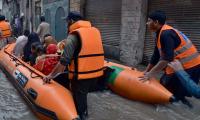ISLAMABAD: The latest Quetta carnage of more than 60 police cadets is yet another case of serious security lapse as the targeted police training centre was vulnerable because of inadequate security despite recent alerts by intelligence agencies about a possible terrorist attack.
No less than Chief Minister Balochistan Sanaullah Zehri confirmed that his government had received intelligence reports a couple of days ago about the presence of some militants who had entered Quetta to carry out subversive activities.
Even otherwise after India’s recent false flag Uri operation, the Pakistani security agencies were expecting RAW-sponsored terrorist attacks, particularly in Balochistan, and targeting of military, security, intelligence or law enforcing agencies.
Quoting security agencies, it was reported by the media recently that RAW would sponsor terrorist attacks, using TTP elements based in Afghanistan, in Balochistan, KPK, Fata on army/ISI installations, etc. However, the targeted police training centre in Quetta city was not protected enough to counter only three terrorists, who had entered the site without considerable resistance.
Only a few months back, almost 50 top lawyers from Quetta became victims of a terrorist attack, which too spoke volumes about security lapse. A key lawyer was first shot dead and when his body was taken to a Quetta hospital and dozens of lawyers gathered there, a suicide attacker without any resistance easily carried out a terrorist attack, killing almost 50 lawyers and others.
On that occasion too, questions were raised about the security lapse but on Monday the Police Training Centre served as an easy prey for the terrorists.
Last year, almost 29 innocents were killed by terrorists who had entered the Badaber Camp in Peshawar despite prior warning. Around 13 terrorists had successfully entered the PAF camp and had killed at least 29 Namazis (worshippers), mostly air force officials, at the airbase Masjid.
All the terrorists got killed. Four security officials, including a captain and three air force officials, got martyred while engaging the terrorists. On that occasion too, like the authorities’ reaction to Monday’s Quetta carnage, it was said if terrorists were not stopped and killed, it could have been catastrophic.
No one knows what the terrorists had actually planned and how many innocents they wanted to kill or which installations they wanted to destroy to make it look like a major disaster. Many wonder, how the killing of more than 60 police cadets in a police training school is less than a catastrophe.
Defence bases, military installations, intelligence, police and other law enforcers’ establishments, even in ordinary conditions, are required to be well-guarded and protected through multiple tiers of security to counter any terrorist attack. In the conditions that Pakistan is presently faced with, such security cordons and preparedness should have been hundred times better.
During the last few years, we have seen unending violent incidents, which claimed not only thousands of civilian lives but also included several attacks on some high profile individuals as well as sensitive and strategic locations in the country, including the attack on the GHQ, naval bases, air bases, airports and intelligence agencies’ regional headquarters and schools in cantonment areas.
The December 2014 attack on the Army Public School, Peshawar, was the most horrific but in that case too, the terrorists struck despite early warnings from the intelligence agencies. The same year, terrorists succeeded in breaching the security of a highly-secured zone and attacked the Karachi Airport where they killed at least 28 people, including 10 terrorists. In that case too, there were prior intelligence reports.
In December 2012, terrorists attacked the Bacha Khan International Airport. In the same year, the Minhas Air Base, Kamra, was attacked. In May 22, 2011 the terrorists attacked the Pakistan Naval Base, Mehran, killing at least 17 people, including security personnel. In March 2009, terrorists attacked the all-important military’s General Headquarters (GHQ). It was said that there were also intelligence reports about possible targeting of the GHQ.
The terrorist networks appeared to be on the run and had weakened following the operation Zarb-e-Azb. However, terrorists still have the muscle to attack taking advantage of security lapses.
Security forces though need appreciation for what they did during the recent years to check terrorism yet they should still review their overall security strategy to ensure that terrorists can’t even get near to any site or installation belonging to defence and security, intelligence or any other law enforcing agency.
Judge raised the query after warning to announce the verdict if Maneka’s lawyer remained absent from the hearing and...
The development came amid the United States’ explicit opposition to the bilateral project
Qaiser claimed that both parties rejected entire process which led to the formation of the incumbent government
She examined a proposed site for the construction of a state-of-the-art hospital in Murree and approved
Raoof Hasan warned against any attempt to extend the tenure of Chief Justice of Pakistan Qazi Faez Isa by another...
These payments will help PBA members to clear some of their liabilities







